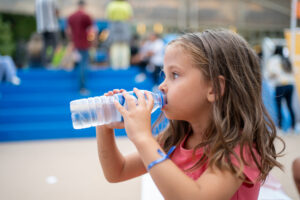In my years of experience as a childhood educator, one of the most eye-opening revelations has been the significant impact of diet, particularly sugar consumption, on the health and learning abilities of young children.
From mood swings and energy spikes to attention challenges and learning difficulties, the effects of sugar are profound and far-reaching.
It’s become increasingly important to educate both parents and children about these impacts.
Let me share insights and strategies I’ve developed and witnessed in action, aiming to mitigate the sugar trap in our children’s lives.
Understanding the Impact of Sugar
The journey to healthier dietary choices begins with understanding the impact of sugar on children’s bodies and minds.
Sugar and Physical Health
I’ve seen firsthand how excessive sugar consumption can lead to energy imbalances and physical health issues in young learners.
It’s a topic I’ve delved into deeply, gathering evidence and observing the effects within my own classroom environment.
Sugar’s Effect on Cognitive Functions
Through my work, I’ve noticed that children’s cognitive functions, such as attention span, memory, and learning capabilities, can be significantly affected by their sugar intake.
This revelation has been pivotal in reshaping how we approach nutrition and learning in our educational setting.
Strategies for Reducing Sugar Intake
Implementing strategies to reduce sugar intake requires creativity, consistency, and collaboration. Here are some approaches that have been effective in my educational practice.
Promoting Healthier Snack Alternatives
I’ve personally curated a list of healthy, low-sugar snack alternatives that are both delicious and nutritious. Introducing these options to children and experiencing their positive reactions has been incredibly rewarding.
Educating Through Fun Activities
Incorporating educational activities that highlight the effects of sugar and the benefits of healthier choices has been a game-changer. Through interactive games and discussions, I’ve seen a shift in children’s attitudes towards food.
Reinforcing the Message with Visual Aids
Utilizing visual aids to demonstrate the sugar content in common foods has provided eye-opening moments for both children and their parents. This technique has been a powerful tool in fostering healthier dietary choices.
10 Examples of Healthy Food Alternatives
I’ve found the following are delicious examples that kids love, and are a fantastic replacement to sugary treats:
Apple Slices with Peanut Butter: Crunchy apple slices paired with creamy peanut butter offer a satisfying mix of fiber, healthy fats, and protein. This snack not only satisfies sweet cravings but also provides sustained energy and essential nutrients, making it a perfect pick-me-up for young learners.
Carrot Sticks with Hummus: Bright, crunchy carrot sticks dipped in rich, flavorful hummus provide a fun and nutritious snack. Loaded with vitamins, fiber, and protein, this combination supports healthy vision and growth while keeping hunger at bay, all with a taste that kids love.
Greek Yogurt and Berries: A bowl of creamy Greek yogurt topped with a colorful mix of berries delivers a powerful dose of probiotics, calcium, and antioxidants. This delightful combo supports digestive health and immune function, offering a naturally sweet taste without added sugar.
Whole Grain Crackers with Cheese: Pairing whole grain crackers with slices of cheese offers a satisfying snack with a perfect balance of complex carbs and protein. This combination supports brain development and keeps energy levels steady, ideal for active young minds and bodies.
Cucumber and Turkey Roll-Ups: Thinly sliced turkey wrapped around crisp cucumber sticks makes for a refreshing and protein-packed snack. This low-sugar option is hydrating and nourishing, providing essential nutrients for growing children in a fun, easy-to-eat format.
Banana and Almond Butter Wraps: Spread almond butter on a whole wheat tortilla and wrap it around a banana for a wholesome snack. Rich in potassium, healthy fats, and fiber, it fuels brain function and maintains muscle health, making it a smart choice for snack time.
Homemade Popcorn: Air-popped popcorn seasoned with a sprinkle of nutritional yeast or a dash of cinnamon offers a whole grain snack that’s both high in fiber and antioxidants. This light, fluffy snack satisfies the craving for something crunchy without the sugar rush.
Frozen Fruit Pops: Blend up a mix of your child’s favorite fruits and freeze them in popsicle molds for a cool treat. These homemade fruit pops are rich in vitamins and hydration, providing a refreshing snack that’s naturally sweet and free from added sugars.
Avocado Toast: A slice of whole grain bread topped with creamy mashed avocado is a simple, nutrient-rich snack. Packed with healthy fats, fiber, and essential vitamins, it supports brain health and energy levels, making it an excellent choice for growing children.
Edamame: Steamed edamame pods lightly seasoned with a pinch of salt offer a fun and interactive snack that’s rich in protein, fiber, and essential minerals. This snack supports healthy development and provides a satisfying, chewy texture that kids enjoy.
The Role of Educators in Nutrition Education
As educators, we play a crucial role in nutrition education, serving as role models and sources of information for our young learners.
Leading by Example
I’ve made it a point to model healthy eating habits within the classroom. This approach has not only reinforced the message but also built trust and credibility among my students.
Integrating Nutrition into the Curriculum
I’ve woven nutrition education into our curriculum, making it a regular part of our learning journey. From science lessons on the body to math activities involving counting and measuring healthy ingredients, the opportunities are endless.
Challenges and Solutions
Addressing the sugar trap in young children’s diets is not without its challenges. However, with the right strategies and mindset, overcoming these obstacles is entirely possible.
Navigating Social and Cultural Pressures
I’ve observed that social and cultural pressures can often derail efforts to reduce sugar intake. Hosting discussions and workshops has been effective in creating a supportive community that understands and values healthier choices.
Making Incremental Changes
In my journey, I’ve learned the value of making small, incremental changes. Encouraging families to start with one less sugary snack a day or to dilute juice with water has led to sustainable improvements in dietary habits.
Final Thoughts
In my years of working with children and through my adventures in nutrition education, I’ve come to understand the critical role that diet plays in children’s health and learning.
The sugar trap is real, but with education, awareness, and dedicated effort, we can guide our children towards making healthier choices that benefit their bodies and minds.
It’s a journey that requires patience and persistence, but the outcomes—a generation of healthier, more focused, and more engaged learners—are well worth the effort.












